Ultimate Guide: Planning an African Safari Adventure in Kenya and Tanzania
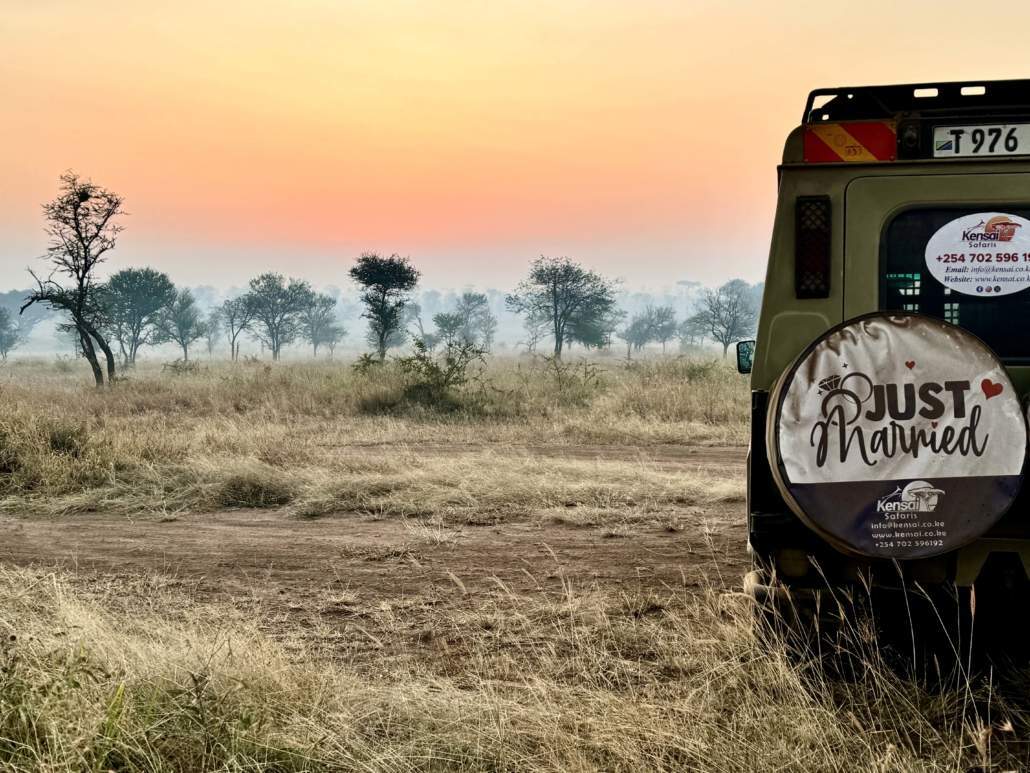
Embarking on a trip to Africa, particularly for a safari, is more than just a travel experience; it’s a journey straight into the heart of the wild. I knew it had to be a grandiose trip saved for our honeymoon (or adventuremoon) because when Dan chose to do life with me, he knew what he was signing up for – a life of broken-down jeeps on the side of a road in Africa, not a drink by the pool, laze on the beach kind of vacation. Plus, how many people can say they woke up to midnight hippo visits, zebras at their door, or saw a lion brawl on their honeymoon? Misadventures always make the best stories. But let me tell you, planning an African safari adventure is not for the faint of heart.
From vaccines and pills to visas, it’s by far the most hoops and pre-planning I’ve ever had to do to prepare for a trip – but an African safari is truly a once-in-a-lifetime bucket list experience. From choosing the best time of year for animal viewings to exploring the unique cultural landscapes of each region, safari planning is both exhilarating and demanding.
Discover essential tips for planning an unforgettable African safari in Kenya and Tanzania, including top destinations, best travel times, and wildlife experiences.
Here’s everything you need to know about planning an epic safari to Kenya and Tanzania:
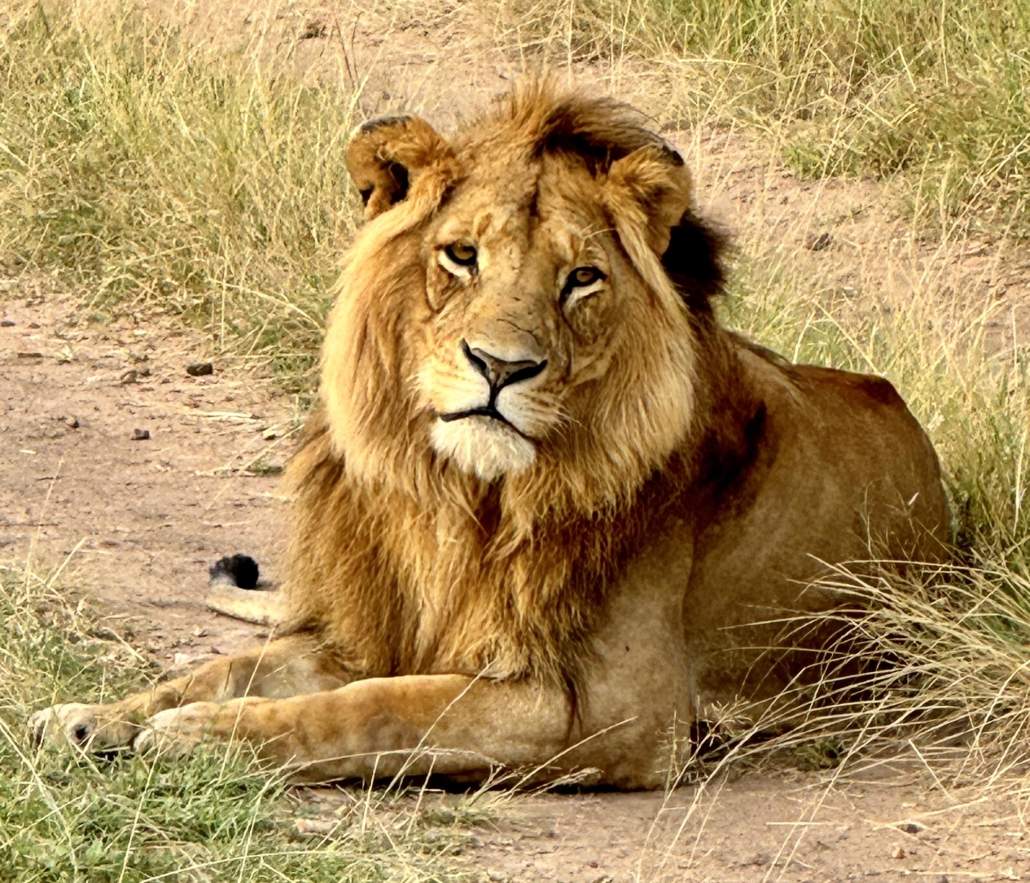
Where to Go on Safari in Africa – Top Destinations for African Safaris
Ten countries in Africa have a strong wildlife focus: Kenya, Tanzania, South Africa, Uganda, Mozambique, Botswana, Zambia, Zimbabwe, Malawi, Namibia, and Rwanda, each with its own appeal and nuances. But by far the most popular destinations are Kenya, Tanzania, and South Africa, which combined account for over two-thirds of safari visitors to the continent.
When we originally started planning our June/July summer trip, we thought we’d go to South Africa as Cape Town’s wine route and penguins also intrigued me, but we quickly discovered when we wanted to travel wasn’t the right season for Kruger National Park. We ultimately chose Tanzania and Kenya for the seasonality and the Big 5 animals as our summer is winter and migration in Central Africa versus South Africa, where it would’ve been the rainy season.
Tanzania has nearly two dozen national parks, including the Serengeti National Park and UNESCO World Heritage Site, Ngorongoro Crater Conservation Area, where humanity is believed to have begun. It is also home to one of the world’s highest densities of wild animals, including one of the largest remaining populations of the highly extinct and allusive black rhino. Tanzania has the largest animal population density of any country in the world, and the Serengeti is famous for its wildebeest migration, which spills into the Masai Mara National Reserve in Kenya. The Serengeti is 10x the size of Masai Mara, and Masai Mara is huge (think 8-10 hours to drive across) so I was happy with our choice.
Infrastructure-wise, South Africa is the most developed and easily accessible; Tanzania falls in the middle with signage and facilities, while Kenya is by far the most rugged, think: mostly off-roading. Even though Kenya and Tanzania share a border, the experiences between the countries were vastly different, and I’m glad we got to see both.
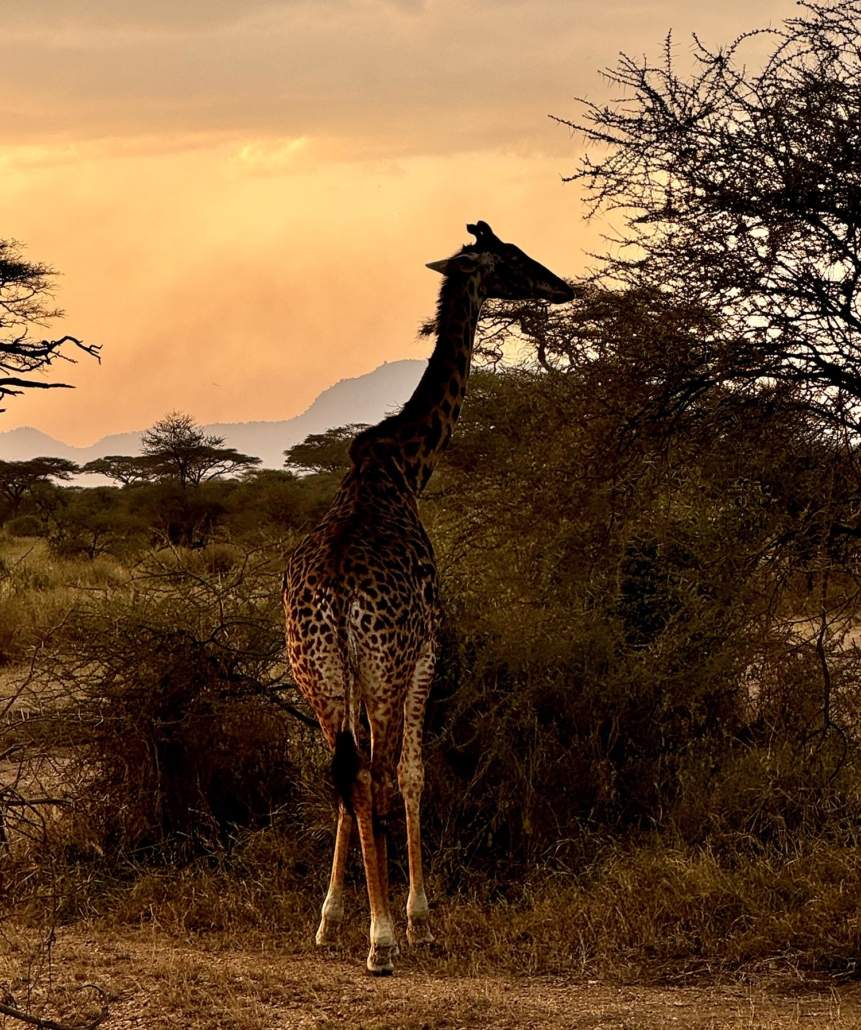
Best Time for Safari – Optimal Seasons for Kenya and Tanzania Safaris
The time of year is essential based on what you want to see and the weather, but it can vary slightly from year to year. For both Tanzania and Kenya, the long, cool, dry season is from July to October when the animals are most plentiful, vegetation is thinner so they’re easier to spot, and the weather is moderate and warm. This is also high season for tourists, meaning prices are going to be inflated. South Africa’s peak is October-April.
We went to Tanzania and Kenya in mid-June, intentionally 1-2 weeks before the high season was set to start, so it was slightly cheaper. The weather was absolutely perfect, and by sheer luck, we caught a good bit of migration. Since it’d been a rainier year, the animals started moving earlier than normal, and it’s hard to imagine there being more animals than we saw. On the flip side, because of the heavy rains, the rangers were doing quite a bit of controlled burns, so the fires made the park quite smoky and moved the animals around a bit. As with anything, there are always pros and cons.
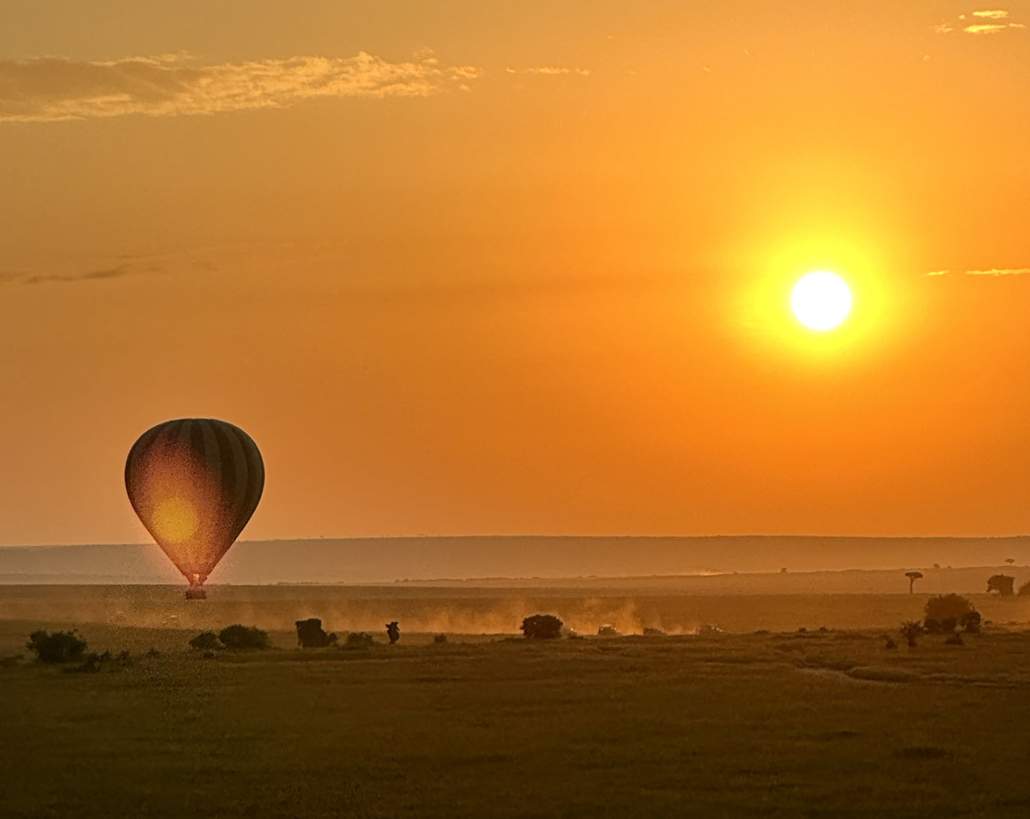
What a Safari in Africa is Really Like
Safaris truly are National Geographic come to life. I could not believe how close the animals got to our car, completely unphased by human observers. I could have reached out and touched lions, giraffes, zebras, and elephants, and the experience was a striking reminder that this is their world, and we’re the outsiders.
We arrived at night the first day and my friends were already spotting tons of animals in the distance. I was upset thinking my eyesight was too bad I wouldn’t be able to see anything. That thought quickly evaporated the deeper we went into parks, as the closer and more abundant the animals became. I wanted to count how many animals we saw, but it quickly numbered in the hundreds and probably even thousands. Throughout the whole trip we continued to play the game, “Is it an elephant, or is it a rock? Is it a giraffe or a tree?”
The majority of safaris are driving safaris, with a few specialty options if you seek them out (walking safaris, horseback riding safaris, flying safaris, hot air balloons, etc). But in general, expect to spend 8-12 hours a day bouncing around as a passenger in an open-air jeep. Driving is bumpy AF down narrow dirt roads, think Mr. Toad’s Wild Ride on steroids. Sometimes the drivers have to go ridiculously fast just to be able to see through the dust, and other times, they crawl to avoid potholes, water crossings, and other obstacles. They call it a free African massage; it’s all just part of the experience. Flat tires are common (we had two in one day), and air conditioning is the wind whipping your hair. Toilets are a mixed bag; sometimes there are checkpoints with toilets or holes; other times it’s on the side of the road.
Surprisingly, we liked the tented camps better than the lodges. They felt more private and authentic and had the best access to get up and go. They aren’t your typical glamping tents but semi-permanent structures with walled, sectioned off rooms with full showers, toilets, four-poster beds, and dining halls.
But as nice as the camps and lodges are, they all had quirky rules. One place we stayed had certain hours for electricity, hot water, and WiFi and at another, you had to let the staff know you wanted to shower so they could pump hot water for you. Nowhere were you allowed to walk around at night without an escorted guide for safety from potential animals.

What Surprised Us About an African Safari
While typically viewed as an adventure, a safari is a much less active trip than anticipated, and entails hours of sitting in a bumpy vehicle. Walking safaris are only allowed in certain parts of parks as in most places, it’s too dangerous to be out with the animals. If you don’t like 4x4s, it’s probably not the experience for you.
I couldn’t believe the photos we got with just iPhones (how all of these were taken). Yes, the animals really were that close.
Everything is hakuna mata; go with the flow. You arrive at camp four hours late because you got a flat tire and are locked outside the entrance gate of the park? No worries. They’ll accommodate you.
The rangers protect certain animals to maintain populations and a delicate ecosystem balance. I was certainly not expecting human interference in one of the planet’s most wild and rugged places. We saw them chase off two baboons threatening a mama cheetah and her cubs.
Fun animal facts: according to our guide, hyenas really are the king of the jungle and the apex predators; Disney just gave them a PR problem in The Lion King. Cheetahs are much more fun to watch than lions; they’re way more active, while the lions sleep most of the day (“In the jungle, the mighty jungle…”). Hippos have bright red faces because they’re sunburnt. And the wildebeest migration is truly Noah’s Ark come to life. They run two by two in endless zig zaging lines across the plains. It’s mesmerizing.
We were surprised by how many domestic animals (cows, goats, sheep) there were (not getting eaten) and the condition of these countries outside the parks. Outside, the parks are vastly different than the protected nature with dozens of tribal villages and minimal infrastructure.
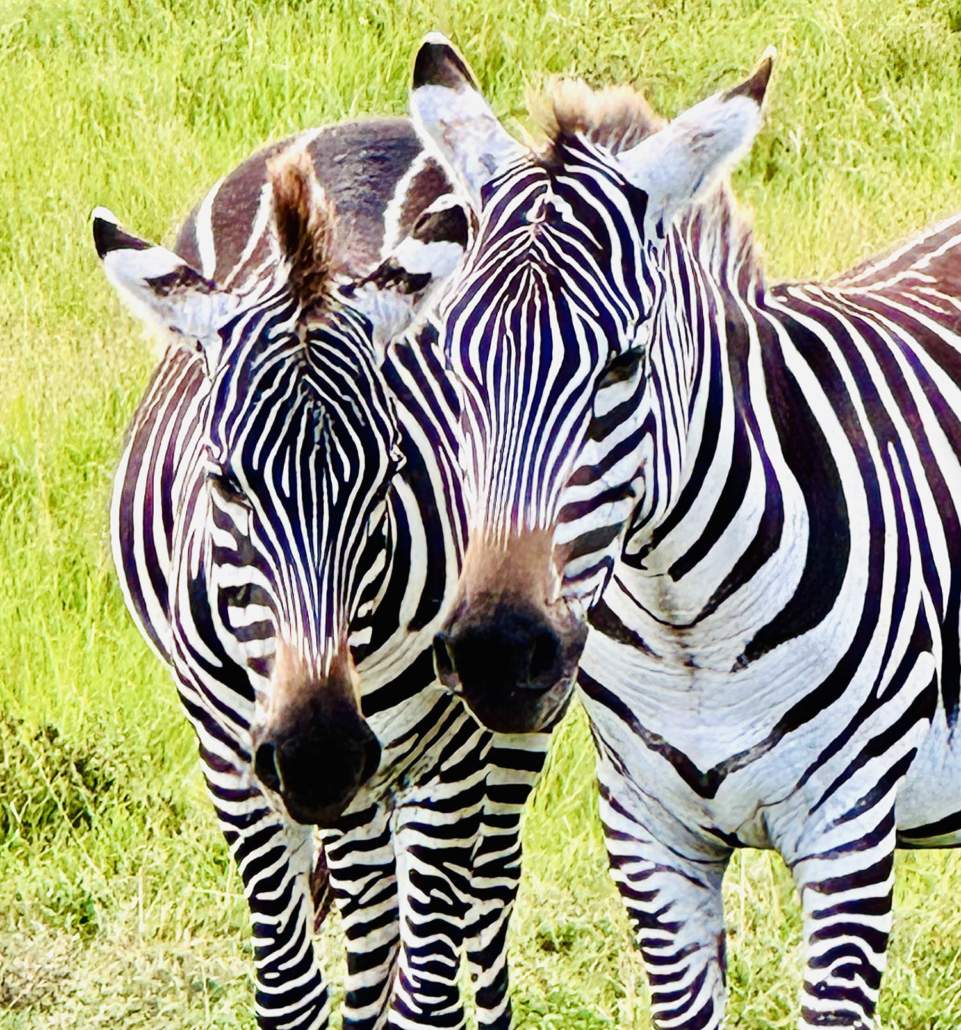
How Much Does a Safari in Africa Cost?
A safari is quite literally a choose your own adventure with prices varying depending on how many days you visit, whether you want a group vs. private tour, where you go, and the type of accommodations. There’s everything from budget lodges to resorts and tented camps both inside and outside parks. I highly recommend a private tour as it’s not that much more expensive, and you really want to be on your own schedule if you get hungry, tired, or burnt out and in need of a rest.
A mid-range safari starts roughly at $300 per person per day, which includes lodging, game drives, and all meals. Our 6-day safari cost about $2500 per person, excluding flights, which were about $1500 per person from the US.
We used SafariBookings.com to compare options, which lets you request quotes from multiple operators at once, completely customized to your preferences of location, camp or lodge, and trip length. You can go back and forth with each operator to design the perfect package for you. Other booking sites worth checking out are BookAllSafaris.com and Go2Africa.com/.
After evaluating four quotes, we ended up going with Kensai Safaris, who surpassed all expectations and catered to my every particular (and sometimes ridiculous) request, including printing our “Just Married” wedding photo on the car and customizing our itinerary with a Zanzibar beach add-on – no questions asked. The whole team spoke perfect English (most do, in addition to Swahili) and were super responsive, checking in on us quite literally 24/7 throughout the entire trip.
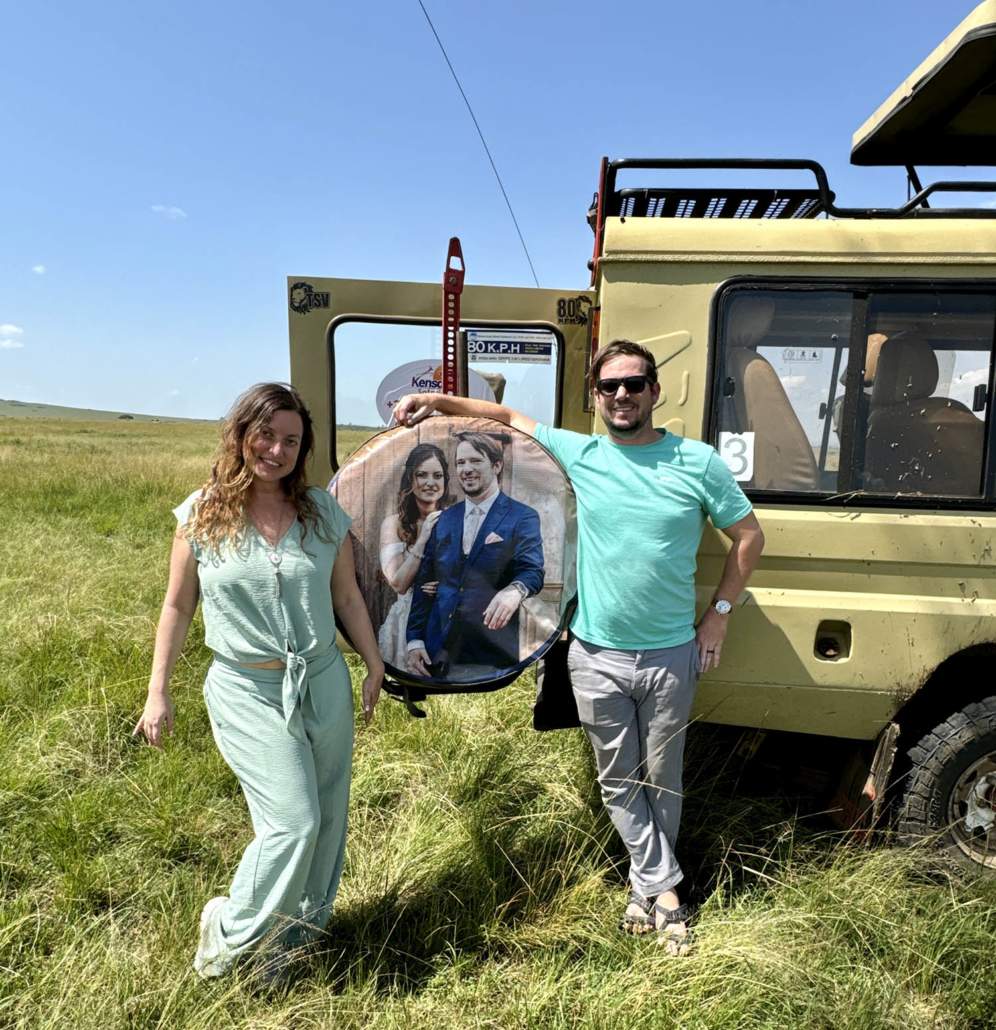
Supplemental Safari Costs
In addition to the hard costs of the trip and the flights, you want to bring cash for tips (USD is accepted everywhere). These are at your discretion but are generally expected to be about $10-20 per person per day for the guides and drivers, plus a few bucks for the kitchen staff and baggage carriers.
And you have to remember to factor in the cost of visas and vaccines. Tanzanian visas cost $100 each, while Kenya visas are $35 each.
Our shots and pills varied wildly based on what insurance we had. We were told the yellow fever vaccine, which is the only one that’s required, is almost never covered. It was about $200 a piece at Walgreens, while typhoid was free with our insurance. The malaria pills were $21 for me, free for Dan, and 100ish for Alison, which was a mini-miracle considering everything I read online said it would be about $50-150.
I would also highly recommend travel insurance for a trip of this magnitude and peace of mind. I have an annual travel insurance plan through Allianz and added a supplemental plan just in case. We had a lot of weird flight connections, and without access to Western medicine, it’s always better to be safe than sorry.
We also spent way more on souvenirs and African art than expected. The tribes sell handmade crafts that support the local schools, so at least you can feel good about it. Everything is negotiable, but it’s the only place I’ve ever traveled where the tourist checkpoints and airports were less expensive than straight from the source in the village.
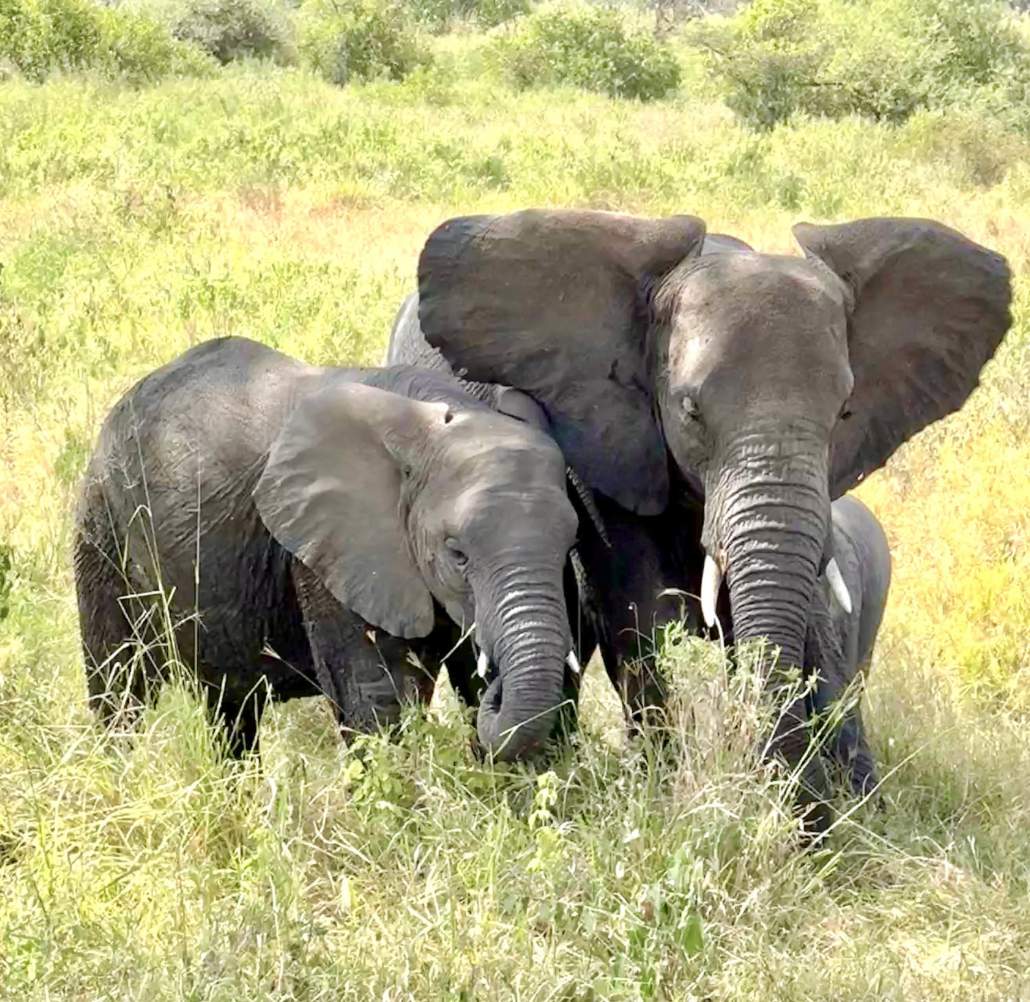
Essential Tips for a Successful Safari Adventure – How Do You Prepare for a Safari in Africa?
Get your visas and get your shots. The only vaccine officially required by both Kenya and Tanzania for US visitors is yellow fever, for which they issue a yellow paper certificate you need to show upon entry at customs. We also got typhoid, which the CDC recommends, and pills for malaria, which has no vaccine but preventative medicine. Without access to a primary care physician, I used Travel Meds to Go to prescribe the malaria pills, which took just minutes for an online consult and cost just $25.
It’s recommended that you get your vaccines at least 10 days before travel. Realistically, you could schedule them up to a month out, as it takes several weeks to build immunity, but you do need an appointment, you can’t just walk in. We were also told it’s really important to get any vaccines you’re getting at the same time, as they’re “live vaccines,” or you have to wait 28 days between administering the next dose.
There are many different variations of malaria pills. I can’t swallow pills, so I was given easy-to-chew ones to start two days before travel and continue for seven days upon return. Alison got one of the weekly variations to take for four weeks. It’s just what your doctor prescribes for your specific situation.
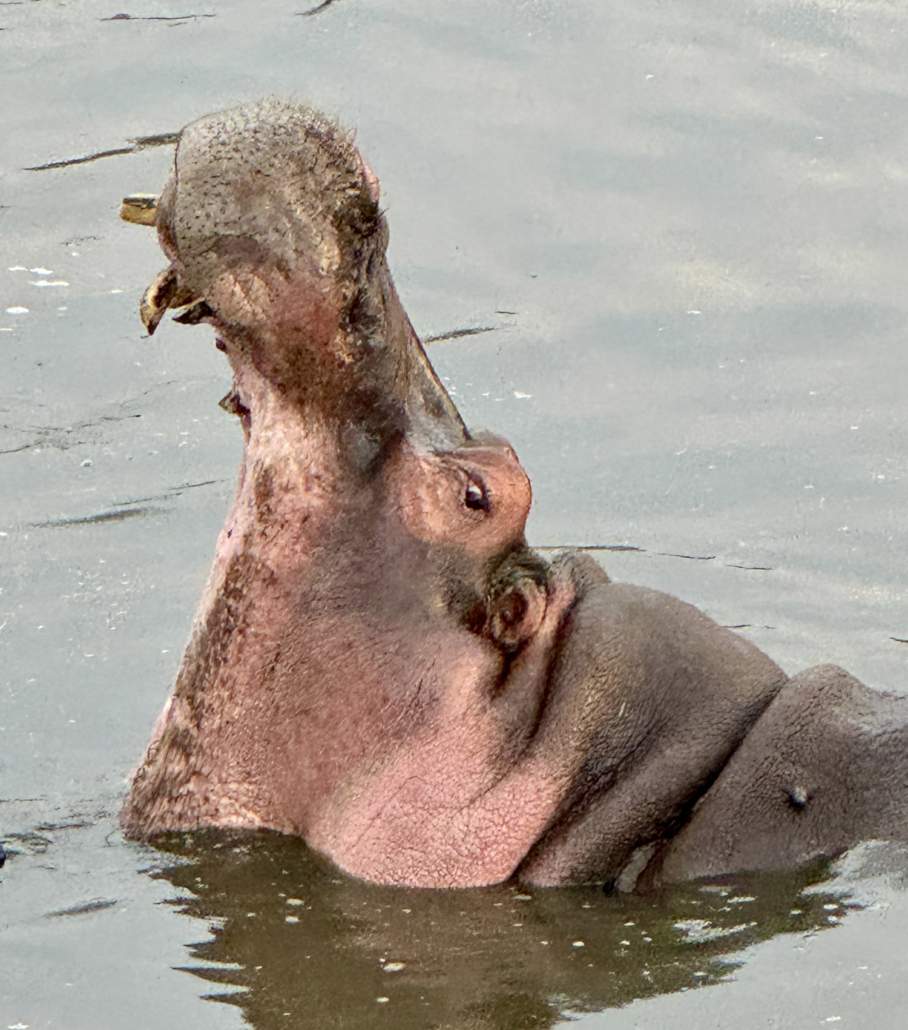
What’s the Food Like on Safari? aka. What Will I Eat in Africa?
Food in Africa is largely Indian and British-inspired. Dinners are typically some type of meat curry stew with a tomato base and a carb—rice, pasta, or potato, a box lunch while you’re on safari (that include yogurt, fruit, juice, chocolate, and a sandwich or meat of sorts), and eggs, toast, crepes (pancakes), and bacon or sausage for breakfast. Tea and coffee are generally available throughout the day at the lodge.
You typically have more choices at the lodges, which generally offer buffets for breakfast and dinner, while the camps are more three and four-course plated dinners, whatever they feel like cooking that night. Everything we ate was tasty and satisfying but not super memorable; you’re not there for the food, you’re there for the animals.
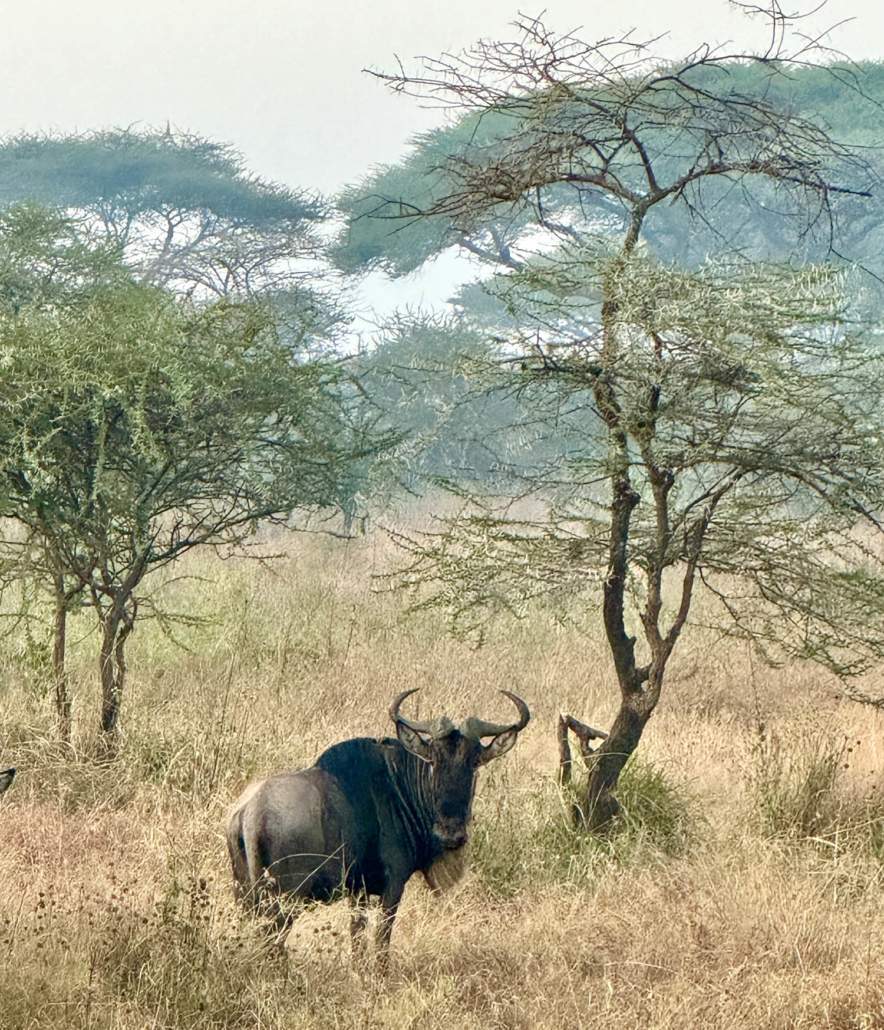
Big 5 Safari Animals in Kenya and Tanzania
The “Big Five” in Africa are essentially your animal bucket list, the largest and most iconic animals that can be seen on a Kenya and Tanzania safari. They include the lion, leopard, rhino, elephant, and African buffalo. Of the Big Five, the rhino is by far the most rare and the only one we didn’t see, as it’s nearly extinct. We saw more lions than expected, plenty of elephants, a few buffalo, and one leopard. I’ll take four out of five as a win.
Overall, we were spoilt for choice and saw thousands of animals. Things we were excited about seeing day one became commonplace, “Oh, it’s just another giraffe.” Zebras are apparently the horses of the Serengeti; there are so many, and the wildebeest extended as far as the eye could see.
You go on game drives at sunrise and sunset when the animals are most active, heading to specific areas where specific species are known to hang out in search of the rarer finds like hippos and cheetah. Technically, anytime you’re driving through the park, there’s a good chance of spotting something. All the drivers are on the same radio channel and work together to tell each other what animals are where.
Some people like to be out all day seeing what they spot, while others prefer to pop back and forth to the lodge for a midday break as it is a lot of driving and does get quite hot. This is why I’d recommend a private tour: to be on your own schedule without having to appease a group.
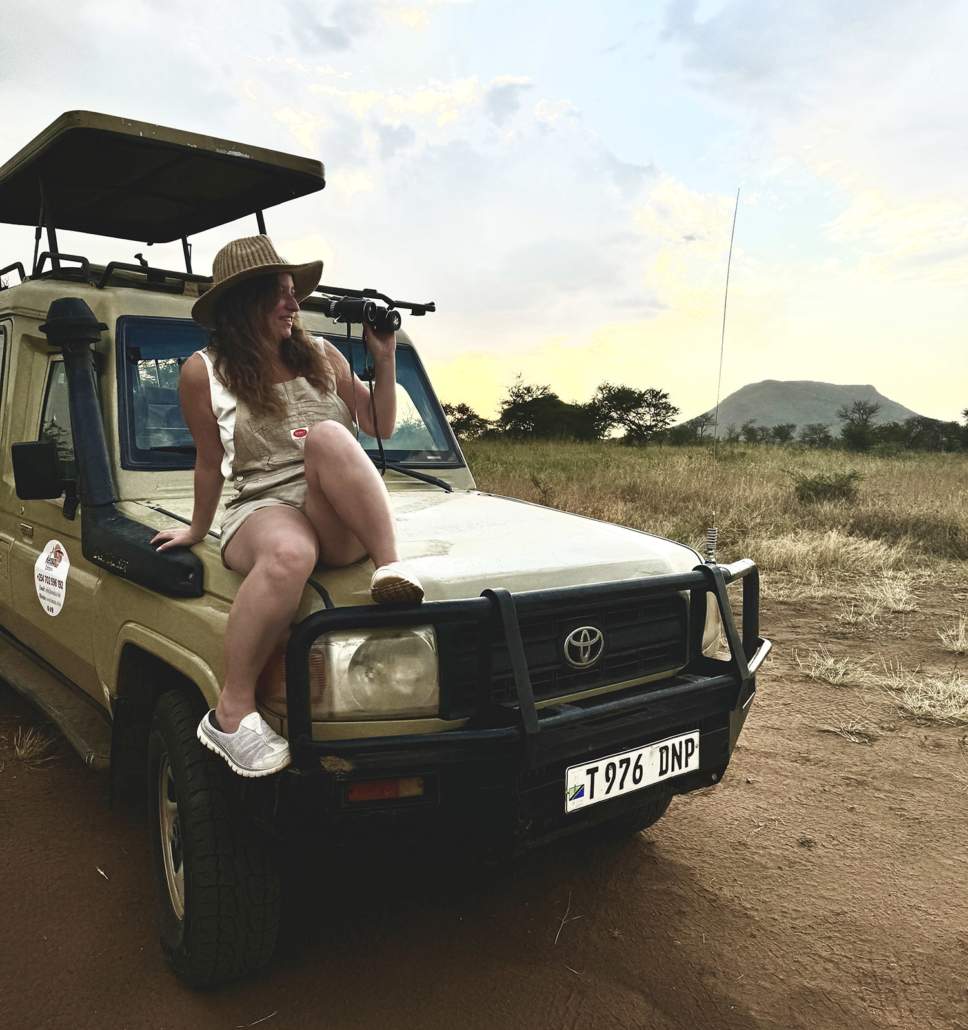
Safari Clothes for Africa… and Gear to Pack
I spent a lot of time (read: months) curating a safari wardrobe that was functional, comfortable, and cute. Dressing in layers is key, with staple pieces being neutral two-piece sets, linen or cotton pants, breathable tops, and a jacket or long-sleeve shirt you can take on and off.
While I love rompers, they’re not easy if you need to drop trough for a “tire check” (aka. a quick bathroom break). Similarly, shorts are stylish but impractical as the temperatures from sunup to sundown fluctuate wildly. I don’t know why safari hats are a thing—it’s more for the aesthetic than function, and packing them can be a pain. Any baseball cap will do.
Also, there’s a reason the color palette is beiges and grays. Whites get dirty quickly, and blacks get hot and attract bugs (although in the dry season, I was shocked at how few bugs there were—I didn’t see a single mosquito, just a few annoying flies). No matter what you wear, you can expect to get dusty and dirty.
You don’t need hiking boots because you’re sitting most of the day in a car. Flip-flops or gym shoes are just fine.
Also recommended to bring: a backpack, belt bag, binoculars, sunscreen, bug spray, wet wipes, a personal fan, charging adaptors, and biodegradable toilet paper. Before you leave, spray all your clothes with permethrin, which is odorless insect repellent that lasts for six weeks. Thank me later.
Like it? Pin It!
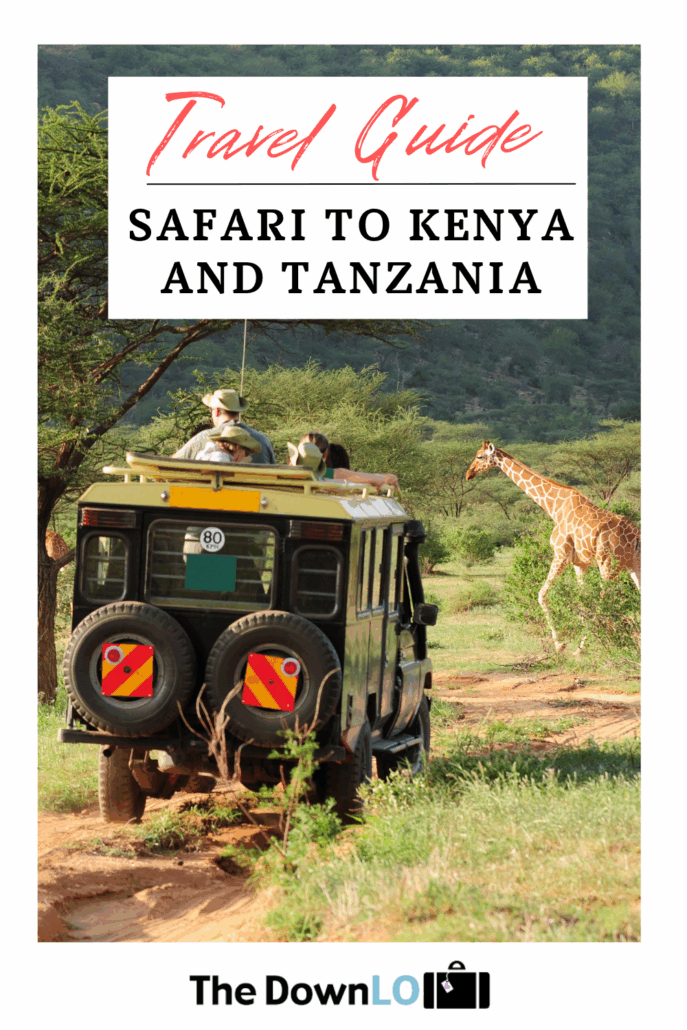
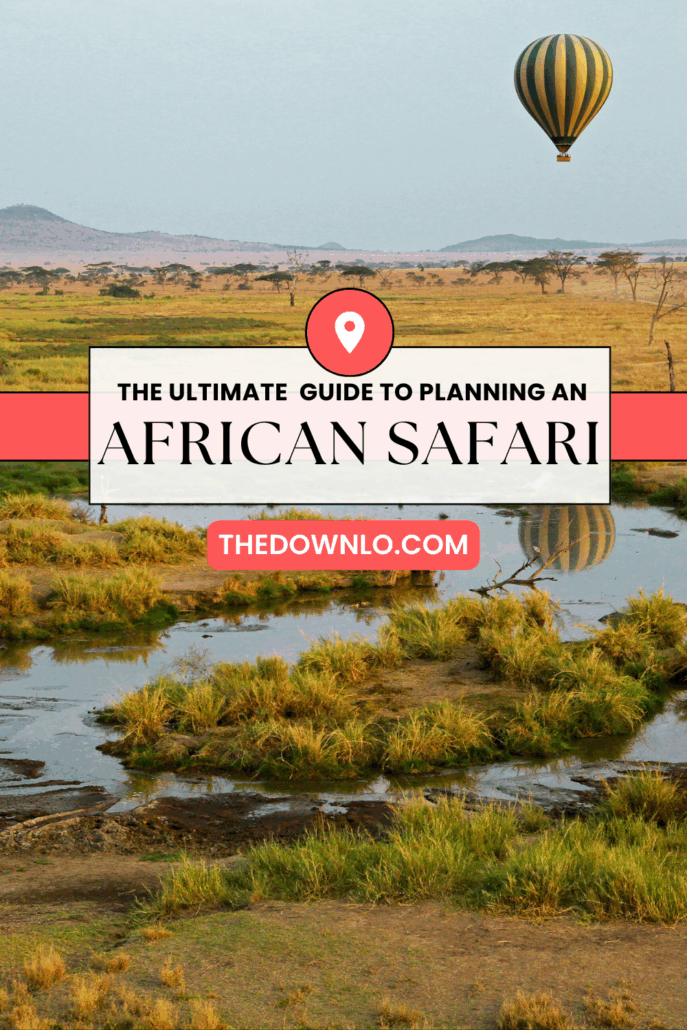
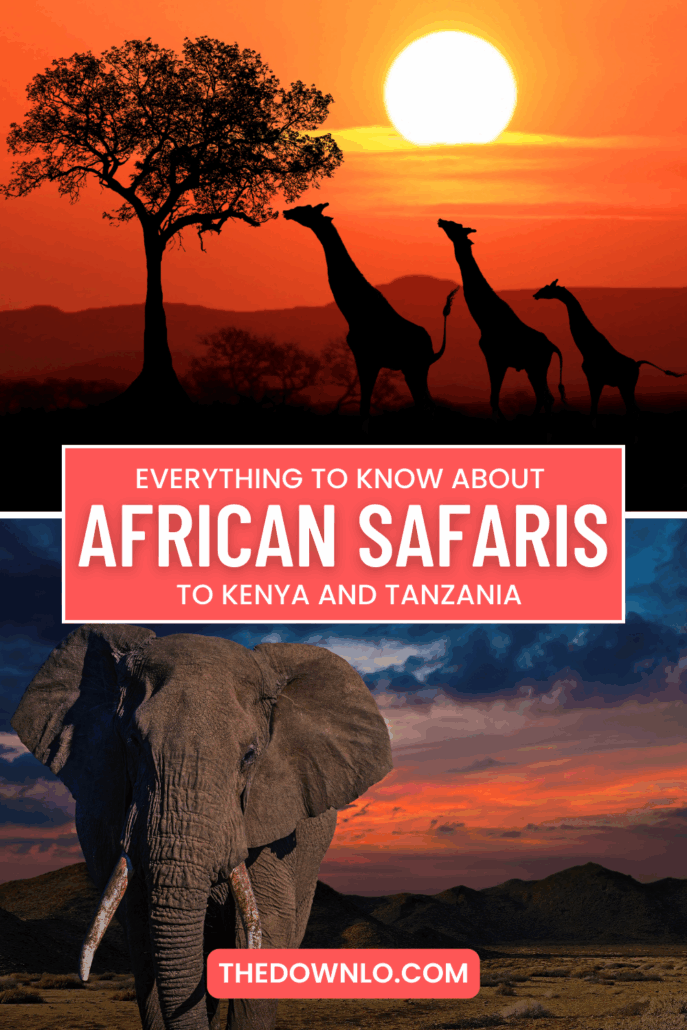
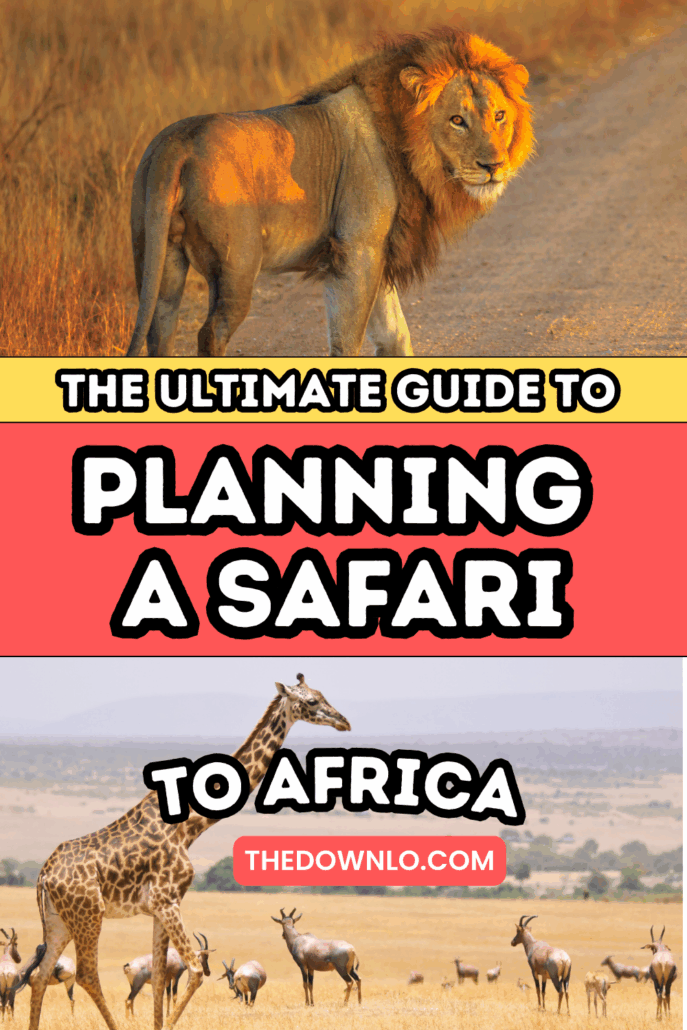

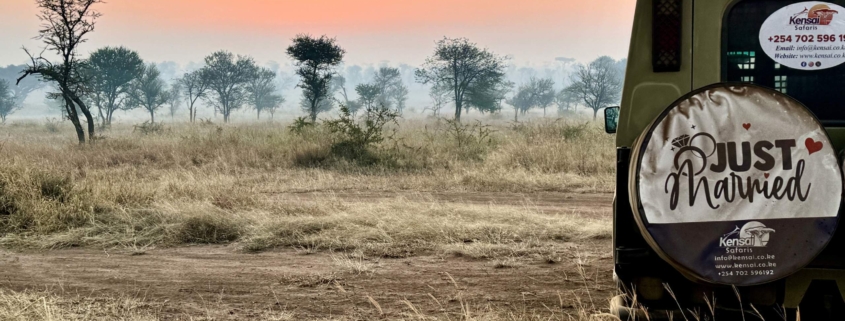
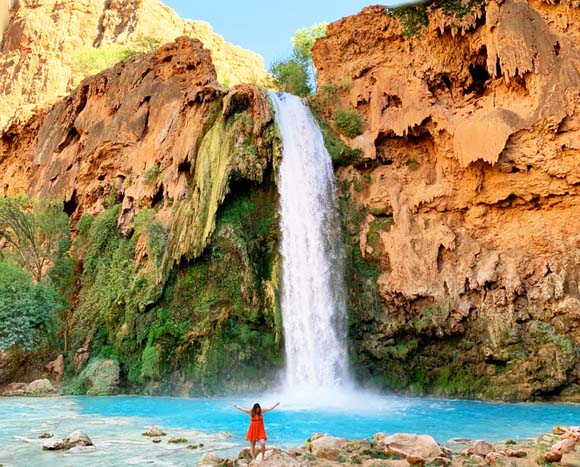


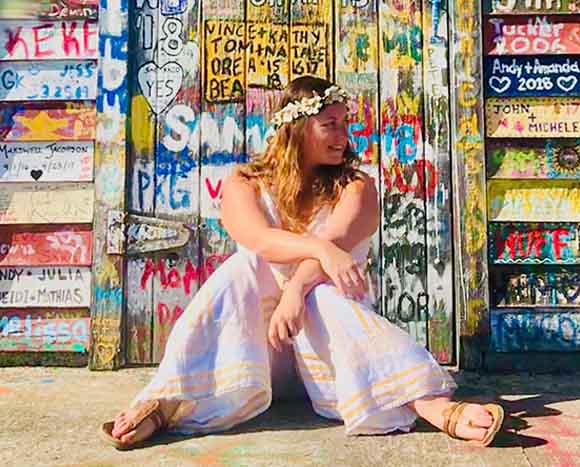
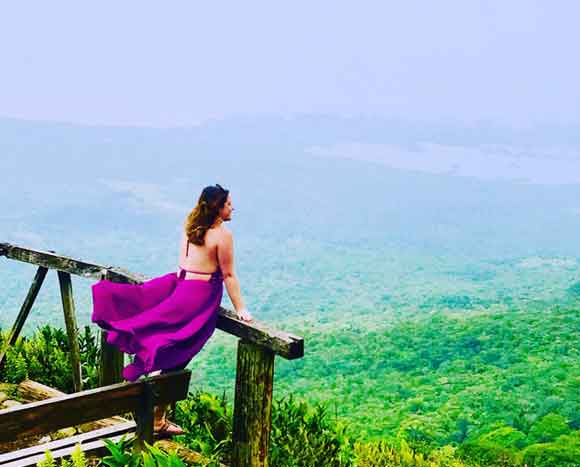




Leave a Reply
Want to join the discussion?Feel free to contribute!